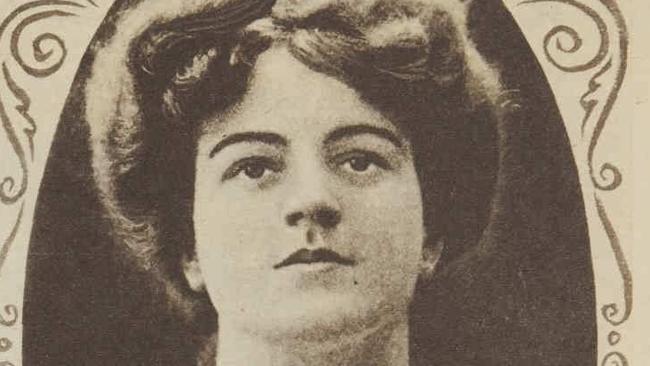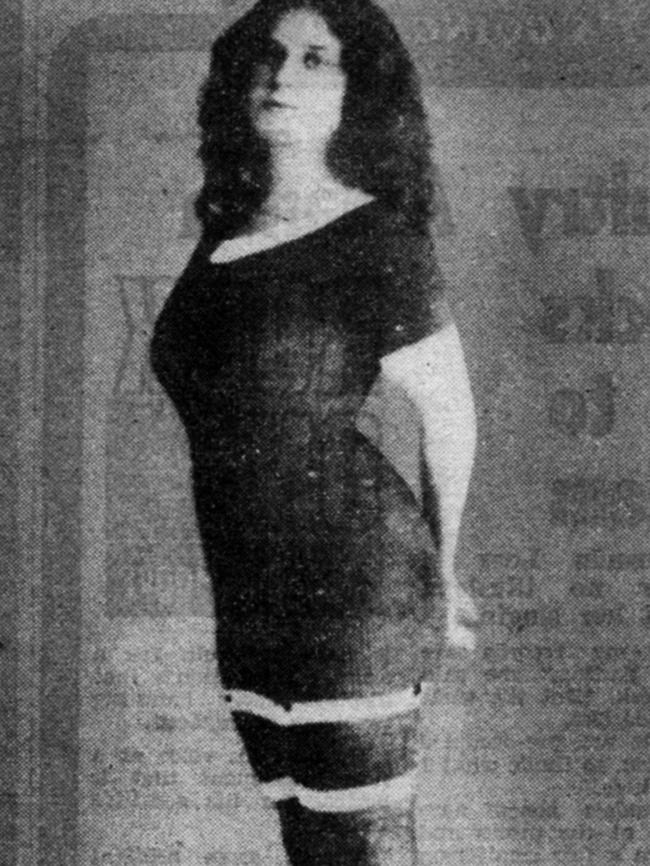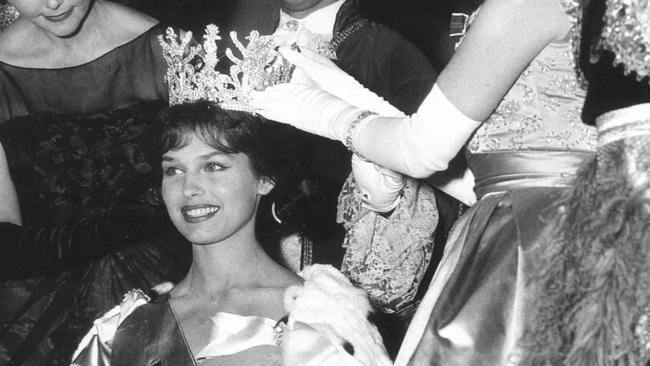First Miss Australia Alice Buckridge liked roller-skating and bush walks and never used cosmetics
Australia’s first national beauty queen wore no make up, played tennis and liked bush walking

Today in History
Don't miss out on the headlines from Today in History. Followed categories will be added to My News.
Australian beauty queens have come a long way in just over a century of beauty pageants. While our current Miss Australia, the Bosnian-born Monika Radulovic, is a hot favourite to win Miss Universe 2015, Australia’s first, albeit unofficial, Miss Australia, had a whole different kind of beauty.
In 1908 Alice Buckridge, a 21-year-old Melbourne shopgirl was chosen by a panel from Sydney-based news magazine The Lone Hand as a response to a Chicago Tribune contest to find America’s most beautiful woman. The women in Australia’s first national beauty quest submitted photographs of themselves from which the winner was chosen.
The roller-skating, tennis playing Buckridge said she never used cosmetics and liked long bush walks. The magazine said: “She has merry brown eyes, well-shaped eyebrows almost black, bright brown hair, the reddest of lips, and a fair complexion that has something of a golden glow in the cheek colouring. The effect is symphonic!”
While it was Australia’s first national beauty contest the idea of selecting the most beautiful woman in a competition has ancient roots. Greek legends say the Trojan prince Paris was summoned by the goddesses Hera, Athena and Aphrodite (Venus) to declare who was the most beautiful. The prize was to be a golden apple created by the goddess of discord Eris who inscribed it: “To the most beautiful,” to cause trouble.
Offered inducements by each goddess Paris chose Venus and was awarded the hand of the most beautiful mortal woman — Helen, married to Menelaus king of Sparta. Paris kidnapped Helen thereby setting in motion the 10-year Trojan War between the Greek states and the walled city of Troy.
Over the centuries there were other competitions to find the most beautiful woman. Across Europe on feast days such as Mayday, pageants were held to find a local queen. But the precursors to the modern beauty contest came in the 19th century.
American showman Phineas T Barnum held the first pageant in 1854 at his Dime Museum in New York. Barnum had already held several national competitions to find the best dogs, flowers and chickens, moving up to humans by announcing a quest to find America’s “handsomest ladies”.

He offered women a dowry as a prize, but many women were too modest to display themselves in public and protesters shut the scandalous contest down. Undeterred Barnum displayed photos of the contestants. A year later 61,000 people turned out to see a baby pageant at the museum.
In Spa, Belgium, in 1888 a quest for the “most beautiful girl on the planet” called for photographic submissions but announced the winners at a private function. The winner, Marthe Soucaret from Guadeloupe, went on to almost complete obscurity.
By the end of the 19th century modesty gave way and bathing beauty competitions were popular at beaches around the world. In 1905 about 40,000 entries were received for a beauty contest at the St Louis Exposition.
In 1908, the same year Buckridge became Australia’s beauty queen, the seaside town of Folkestone in Kent, England, hosted the world’s first international beauty contest. Entrants came from Austria, Germany, France, America, Ireland and England.
The victor was 18-year-old Nellie Jarman, from East Molesey in England but suffragettes protested it was demeaning to women.

In 1911 the Miss Venus Quest was held at Sydney Stadium and won by Sydney girl Millicent Mahy, 17. She never collected her prize, a statue of Venus worth £50. There would then be only sporadic Australian competitions up to the 50s. The first official Miss Australia contest was in 1926. Judged on grooming, sports activities, social graces, diction and the ability to converse, women paraded in swimsuits, evening attire, daywear and sports clothes. They also took tea with the judges and danced at a formal ball. The winner was Beryl Mills.
Tassie woman Phyllis Von Alwyn won in 1927, but the competition then took a break until 1936 when it was run by the paper Smith’s Weekly and won by Sheila Martin. It then disappeared again until 1945 when it was used to raise money for war charities.
Although a Miss Australia was chosen in 1949, a dispute about the choice of chaperones saw the competition suspended from 1950-53.
One of our first big winners on the international pageant stage was Tanya Verstak, Miss Australia 1961 who won Miss International 1962. She was born in China to Russian migrant parents who came to Australia in the 50s.
Originally published as First Miss Australia Alice Buckridge liked roller-skating and bush walks and never used cosmetics



